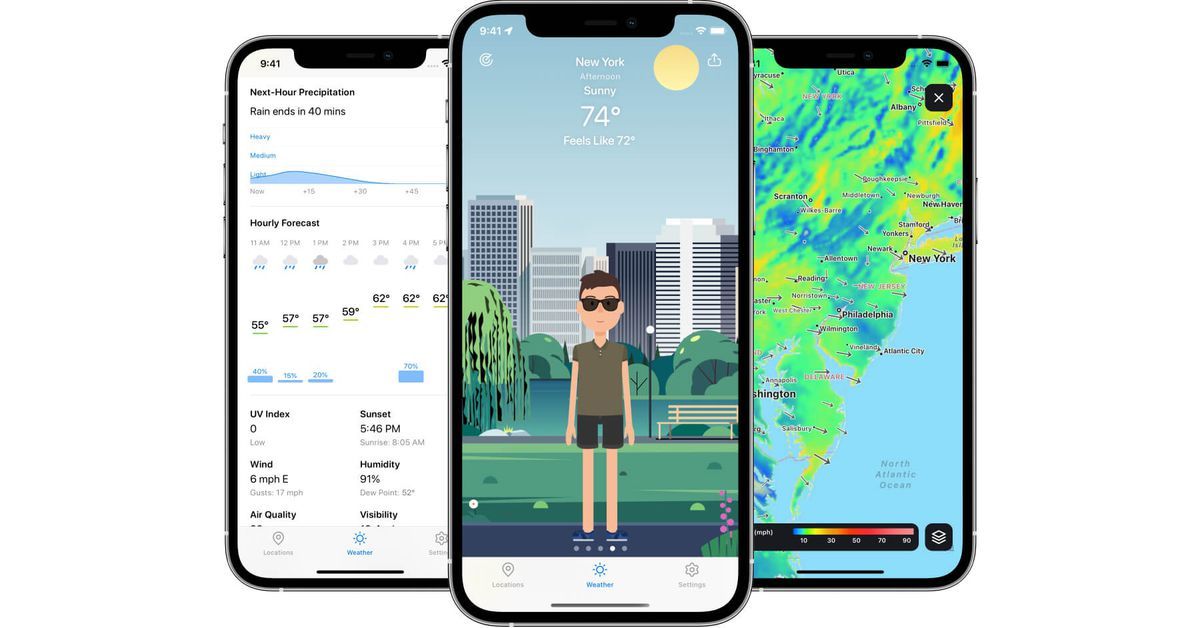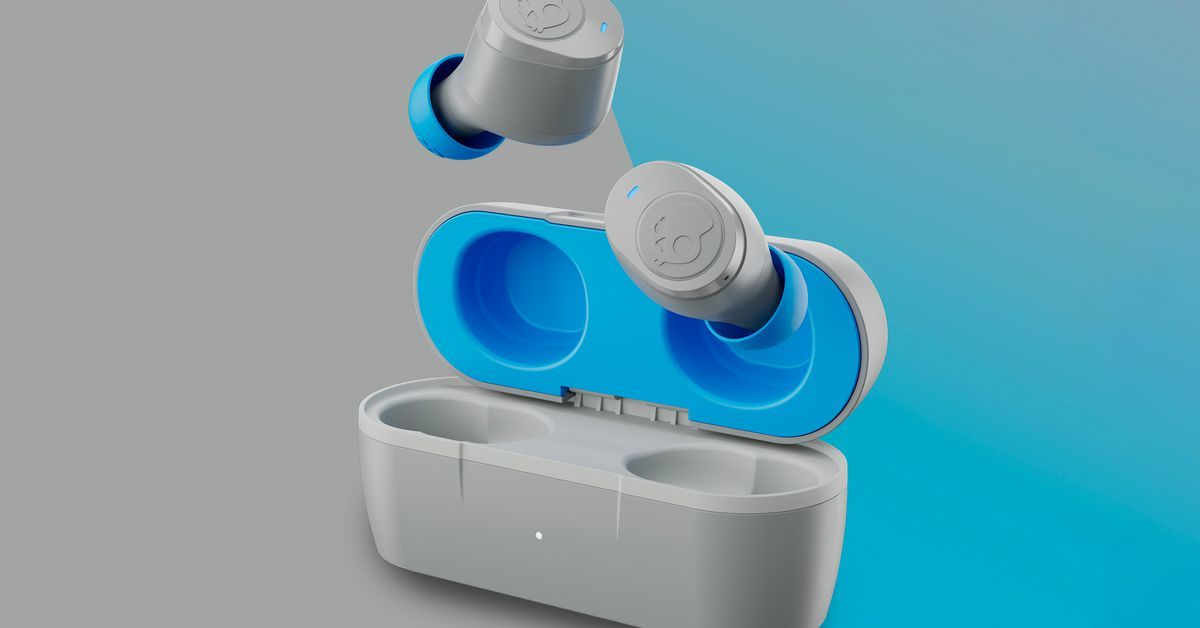Apple’s Weather chaos is restarting the weather app market
Forecast Advisor might be the best-kept secret in the weather business. It’s a website, run by a company called Intellovations, that compares the accuracy of a dozen of the largest weather forecasters. You put in your ZIP code (it only works in the US), and it spits back a ranking of the services based on how correctly they predicted the weather over the last month and the last year. You might be shocked at how different the various sources are and how bad some of them are at predicting the weather.
Depending on which weather app you use, this is extremely actionable information. Many third-party weather apps allow you to switch between data sources, so you can pick the one that’s most accurate near you — AccuWeather, in my case — and enjoy an immediately more useful weather system.
Knowing your go-to forecaster is a handy thing, too, because there’s no such thing as a perfect weather data source. “Whether it’s because of the model they use, or whether they have a lot of weather stations in that area to give a lot of coverage, or whether they have access to radar data, it’s just impossible for one to have complete coverage for everywhere,” says Brian Mueller, the creator of Carrot Weather.
Want more on weather apps? We talked about them on The Vergecast, too.
The data is only part of the equation, too. Every source also has its own algorithms for processing that data and tools for publishing it. “The ones I prefer are more poetic,” says Jonas Downey, the co-creator of Hello Weather, “and write a lot about what’s going to happen. Some are really brief, like, ‘partly cloudy.’ Then some of them are like, ‘There will be slight clouds in the afternoon and a light breeze.’ I like the ones that have a little bit more empathy, you know?”
Rather than give you one weather provider, lots of weather apps offer a number of sources. They’re designing ways for you to flip through the sources to find the most accurate one, and more than one developer told me they’re trying to find a way to integrate Forecast Advisor to help. They’re hoping that one way to compete with built-in apps and convince people to download — and even pay for — a third-party weather system is that they can simply do it better.
Dark Sky was a big loss for weather app fans — and weather app developers
It’s been an odd couple of years for the weather app industry. In 2020, Apple announced it had acquired Dark Sky, a beloved weather app that also happened to be the data provider for a huge number of other weather apps. At the beginning of this year, the Dark Sky app stopped working, and the API shut down in March. In the interim, Apple added some of Dark Sky’s tech into its own Weather app and replaced the Dark Sky API with its own tool called WeatherKit.
A lot of users and developers were sad to lose Dark Sky. It was a masterpiece of data-driven design, and its API was easy to integrate and cheap to use. It also offered minute-to-minute weather data long before most other providers, which made those “it’s going to rain in 8 minutes” notifications possible. “I don’t think we would have made a weather app if it hadn’t been for Dark Sky,” says Trevor Turk, Hello Weather’s other co-founder. Unlike most providers, Dark Sky was set up to provide all the data you needed with one API request; instead of asking for every data point, your app could just say “what’s the weather?” and get a full answer. The reason so many weather apps are designed to show current weather, then hourly, then daily, then weekly forecasts, is because that’s how Dark Sky structured its data.
Way back when, Dark Sky was as good as weather app design got. Image: Dan Seifert
And then things got even worse when Apple Weather and WeatherKit both started crashing spectacularly. In early April, the Weather app stopped providing data multiple times, replacing forecasts with error messages. Developers who were using WeatherKit as their data source were out of luck for hours at a time. “All my users couldn’t check the weather for some time,” says Anton Chuiko, the developer of an app called Weather Fit. “From a technical point of view, it’s not so stable.”
That chaos also presented an opportunity, though. Downloads of five big-name weather apps jumped an average of 170 percent the week of the outages, per market intelligence firm Sensor Tower. Weekly active users of those apps jumped 9 percent the same week. Things slowed back down a bit as Apple Weather recovered, but it still showed developers that there’s room for something more.
With Dark Sky gone and WeatherKit unreliable, a lot of weather apps have started to integrate with multiple sources to make sure they’re always online and to offer the most accurate forecasts everywhere. It presents a tough UI challenge, though: giving users one digestible full-featured forecast is hard enough, let alone five or six slightly different ones.
All that data is expensive, too. “We would have to hit every data source every time you request it and then somehow munge all the data together,” says Hello Weather’s Downey. “It’d be slow and expensive.” Turk chimes in: “We’re also not legally allowed to do that.” The data providers’ terms actually prevent combining data with other sources or even using it as a comparison tool.
Carrot Weather is one of the apps blending simple design with huge amounts of data. Image: Carrot Weather
As a result, many weather apps have switched to subscriptions — Carrot Weather now costs about $20 a year, and Hello Weather runs about $13 annually. That’s a steep price to replace an app that ostensibly comes free with your phone.
In order to make it worthwhile, these apps are leaning ever deeper into the data and catering to weather nerds. Carrot’s Mueller, for instance, says he’s spent most of the last year building new radar tools. “So in the US, the radar comes from individual radar stations,” he says. “And then in most apps, they stitch the radar stations data together into a mosaic that covers the whole country.” But the individual stations update faster and with more accurate data than the mosaic as a whole. “And there’s a bunch of other ones,” Mueller says, “like velocity that shows where the winds are spinning and the ‘correlation coefficient’ that’s useful for seeing debris that’s flying around in the air from a tornado.” He’s putting all that stuff into Carrot Weather while trying to make sure users can figure it out.
Weather apps are catering to the weather nerds more than ever
Weather apps have to walk a tricky line: they have to give you that one-screen experience where you can open the app and get a sense of the weather in a second or two while also offering the kind of depth and knowledge that no built-in app will ever match. And then slowly leading users down the rabbit hole, teaching them how to read radar and compare forecasts.
For the average person, Apple Weather and its ilk will probably eventually be fine. “I think it’s going to be like Apple Maps,” Hello Weather’s Turk says. “When Apple Maps came out, it sucked.” But eventually, it got better. To stay ahead, developers know they’ll have to keep finding ways to do more and be better. They’re all thinking about what weather apps might look like on Apple’s long-rumored and imminently expected headset and bracing for all the new features they’ll have to adopt when the next version of iOS is announced in June.
Source: The Verge


